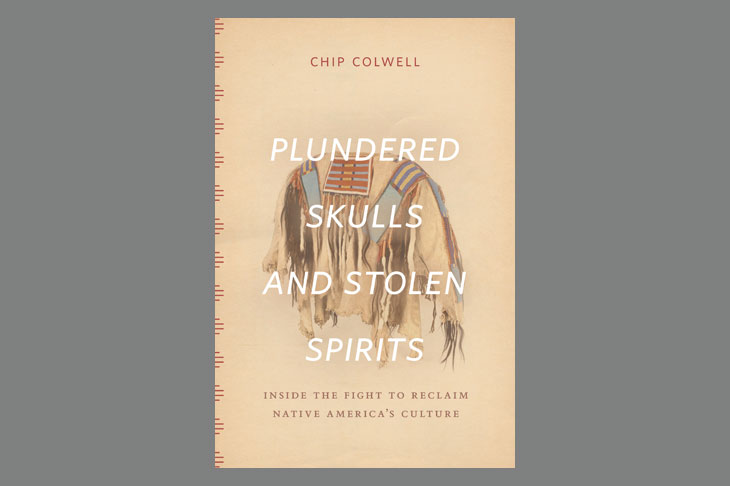The United States has never been renowned for its treatment of Native Americans. If no country has a consistently positive record of engagement with Aboriginal peoples, it might be suggested that in Australia, Canada, and New Zealand more was done earlier, and that more has been done in recent decades, to address histories of dispossession and their legacies. In one respect, however, Washington’s response to native claims has been far-reaching. In 1990, after campaigns and legislative changes within individual states, Congress passed the Native American Graves Protection and Repatriation Act (NAGPRA), which enabled Native Americans to seek the return not only of human remains but also of artefacts associated with burials, or of otherwise sacred significance. The act opened a path to claims upon hundreds of thousands of bones and artefacts in over a thousand museums on the part of over 500 legally recognised tribes.
There was nothing simple about the process. Researching collections and inventories, and working out what institutions held, was a major undertaking. Establishing the identities and tribal affiliations of remains, determining who were appropriate claimants – who had to reach consensus among themselves – and considering where remains and objects would go were among the aspects of what were typically protracted processes.
In 2007, Chip Colwell, a distinguised archaeologist and historian of North American archaeology was appointed to a curatorial role at the Denver Museum of Nature and Science. His responsibilities have included administering the institution’s engagement with NAGPRA. Plundered Skulls and Stolen Spirits (University of Chicago Press) is essentially an absorbing inside account of struggles to reclaim human remains, grave goods and other heritage artefacts.
Colwell’s story is built through a number of exemplary histories – typically wider campaigns that led in due course to negotiation around the Denver collections for which he has been responsible. From the late 19th century onwards, anthropologists eagerly sought Zuni sculpted war gods, properly known as Ahayu:da. These were rapaciously collected by R. Stewart Culin, the inaugural ethnology curator at the Brooklyn Museum, but also by many 20th-century connoisseurs. In the 1970s, Zuni leaders began to consider how they could recover the figures and through entreaty, negotiation, and pressure began to bring pieces home. More than a hundred have since been brought back to Zuni territory and are now kept at a shrine, secure but open to the elements, permitting the deities to decay.
The question of whether return or reburial amounts to a ‘healing process’ is considered via the saga of the 1864 massacre of Cheyenne and Arapaho at Sand Creek, Colorado. The trajectories of Tlingit artefacts are explored. The Killer Whale Flotilla Robe of Chief Shakes was said to have been legitimately acquired by a dealer in the 1940s; it was later sold to the Denver Museum, but repatriated as part of a larger group of Tlingit works. While used in major community ceremonies, it and other special pieces are routinely deposited for safekeeping in the Wrangell Museum, on Tlingit territory.
Colwell’s stories are not only of the insensitivity and acquisitiveness of early ethnologists, but also of native willingness to sell sacred artefacts (sometimes covertly, in the face of community censure) and of continuing internal disputes. He draws attention to archaeologists who lapsed into professional defensiveness, but points also to growing collaboration – manifest for example in the preparedness of Native Americans to see excavated bones fully analysed, and only then released for reburial. That said, he firmly supports the repatriation process. While advocates celebrated the NAGPRA legislation’s effort to arrive at a ‘balanced’ response to native, scientific, and other interests, he notes that hundreds of thousands of remains are still held in museums, and that there is a great deal more to do.
I suspect that even those who begin reading, sceptical for whatever reasons of native claims, will finish the book considerably more sympathetic to them. Plundered Skulls and Stolen Spirits is inevitably partial, but offers, nevertheless, the best single account to date of negotiations between museums, archaeologists, and native people in the United States since NAGPRA. Some may consider the book’s arguments with respect to human remains more compelling than those relating to artefacts. The assertion that ‘Objects shouldn’t be frozen under glass in a museum, but given to the people who breathe life into them’ rehashes a cliché; it overlooks the many senses in which museum artefacts are often activated, for both small groups and broader publics, through educational programmes, reinterpretation in temporary exhibitions, artists’ interventions, conservation, and study sessions; the principle here is one of recovery and reinstatement of ancestral value.
Little consideration is given to the visibility and effect that some artefacts acquire in museum settings, and the social and political consequences of their exhibition and national and international circulation in institutions that many consider prestigious. The affirmative representation of indigenous culture in such forums has had wide-ranging ramifications, for indigenous Australians, Kanak, and Maori, among others. Colwell alludes in passing to international debates, including those around the Elgin Marbles and Maori preserved and tattooed heads, but the book rightly makes no claim to explore or evaluate objects in contention elsewhere. The principle that such issues need case-by-case consideration sounds banal, but is of critical importance. One of the great strengths of Colwell’s book is that it takes us from global rhetoric to particular places inhabited by particular people, with local stories and concerns. That sensitivity to history, place, and context matters.
Plundered Skulls and Stolen Spirits: Inside the Fight to Reclaim Native America’s Culture, by Chip Colwell, is published by University of Chicago Press.
From the July/August 2017 issue of Apollo. Preview and subscribe here.
